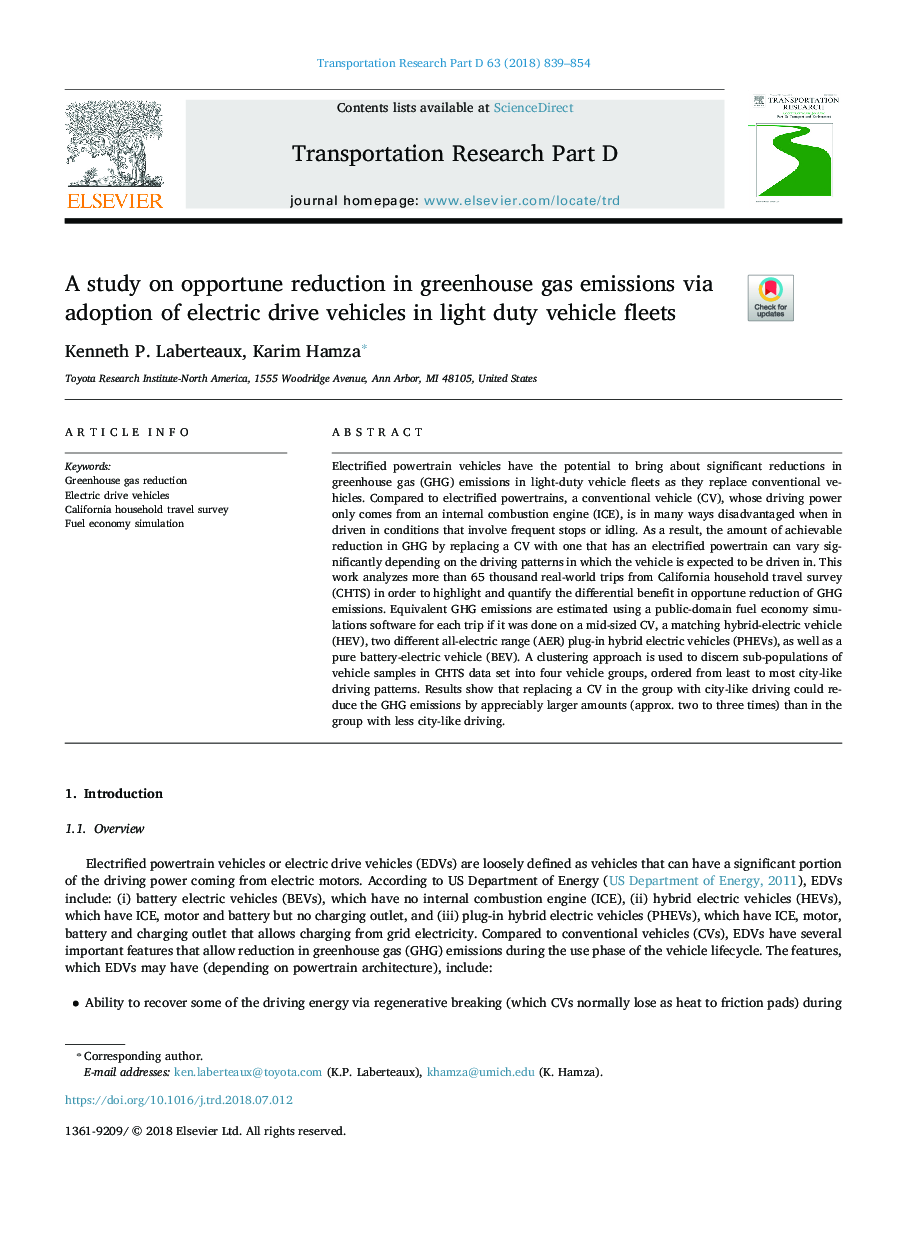| Article ID | Journal | Published Year | Pages | File Type |
|---|---|---|---|---|
| 7498633 | Transportation Research Part D: Transport and Environment | 2018 | 16 Pages |
Abstract
Electrified powertrain vehicles have the potential to bring about significant reductions in greenhouse gas (GHG) emissions in light-duty vehicle fleets as they replace conventional vehicles. Compared to electrified powertrains, a conventional vehicle (CV), whose driving power only comes from an internal combustion engine (ICE), is in many ways disadvantaged when in driven in conditions that involve frequent stops or idling. As a result, the amount of achievable reduction in GHG by replacing a CV with one that has an electrified powertrain can vary significantly depending on the driving patterns in which the vehicle is expected to be driven in. This work analyzes more than 65 thousand real-world trips from California household travel survey (CHTS) in order to highlight and quantify the differential benefit in opportune reduction of GHG emissions. Equivalent GHG emissions are estimated using a public-domain fuel economy simulations software for each trip if it was done on a mid-sized CV, a matching hybrid-electric vehicle (HEV), two different all-electric range (AER) plug-in hybrid electric vehicles (PHEVs), as well as a pure battery-electric vehicle (BEV). A clustering approach is used to discern sub-populations of vehicle samples in CHTS data set into four vehicle groups, ordered from least to most city-like driving patterns. Results show that replacing a CV in the group with city-like driving could reduce the GHG emissions by appreciably larger amounts (approx. two to three times) than in the group with less city-like driving.
Related Topics
Life Sciences
Environmental Science
Environmental Science (General)
Authors
Kenneth P. Laberteaux, Karim Hamza,
